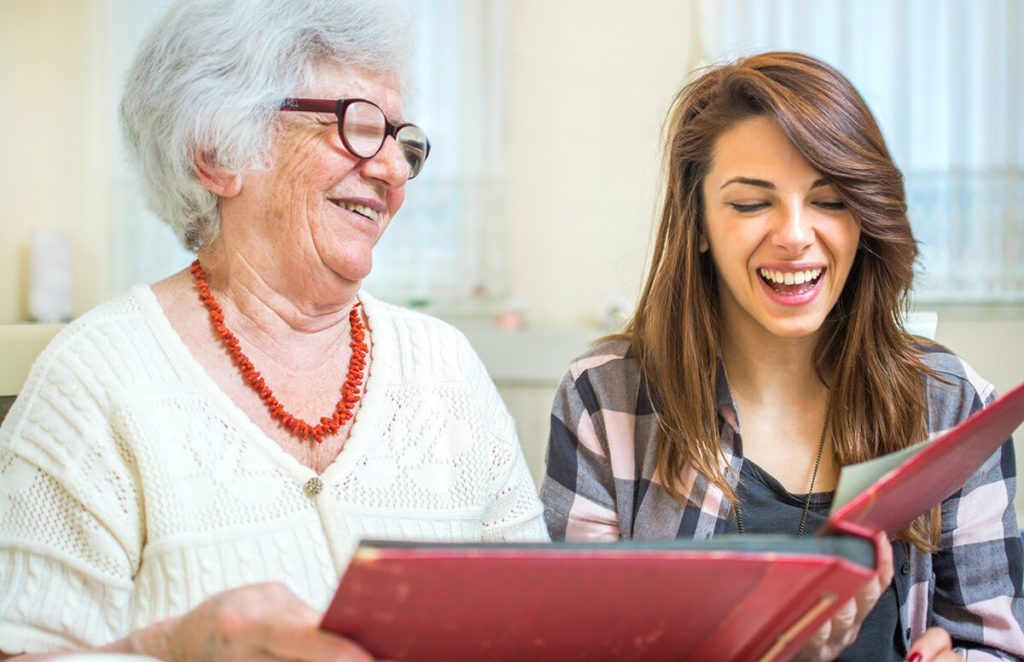
Does that box of unsorted family photos in your closet give you a gnawing feeling? Always wonder what you’re supposed to do with your old slides? Make it a winter project to organize and annotate your family images and records, not just for your current family but for future generations.
After all, said genealogy consultant Maureen “The Photo Detective” Taylor, “It’s your identity. It’s who you are. And you can’t see where you’re going unless you know where you’ve been.”
These eight tips from genealogists will guide your journey and give you some shortcuts:
1. The most urgent memories to preserve are old home movies. “These are deteriorating every day — you lose the colors on them,” said Scott Fisher, who hosts the radio show Extreme Genes. Services like LegacyBox make it a snap. An added bonus of digitizing old films is that they can be turned into frameable stills, which is how Fisher came away with a cherished photo of himself with his grandfather, brother and father, the latter of whom died young.
2. If you have an old photo album, don’t give into temptation to remove photos for framing or distributing. “If you take that album apart you’ve lost the context of the photos,” said Taylor. Instead, to preserve the album, take a piece of unbleached muslin — that hasn’t been treated with fabric softeners — wrap the album up to keep all the loose pieces together and store it in an acid-free box, easily found at places like the Container Store. If you have old loose photos, Taylor prefers storing them in individual polypropylene sleeves, including a piece of acid-free paper to include any known information about the image.
3. Back up your images to at least two cloud services like Dropbox or Google Drive. Documents such as church or hospital records or old letters can be shared with services such as FamilySearch, MyHeritage, or Ancestry. “If something did happen to your house and these things went up in flames, they’re not lost forever,” said Fisher.
You don’t need a fancy scanner to upload your old photos and records: Google PhotoScan is a free app that works on your smartphone. If you have lots of photos, you can take them into a FamilySearch center to access one of its automatic feed scanners. Fisher also suggests hosting a family reunion and renting a high-speed scanner for a weekend — a great opportunity for generations to share their stories (and split the scanner cost). “Everybody walks away with copies of everybody’s digitized pictures without giving up possession of them,” Fisher said.
4. Recruit younger relatives to interview the older ones so you can gain greater family context on video or audio. “They have amazing stories that will be lost forever if we don’t get them on tape,” said A.J. Jacobs, author of It’s All Relative: Adventures Up and Down the World’s Family Tree, who adds that asking “What kind of trouble did you get into as a kid?” often yields great answers.
“If you can afford it or have time yourself, it’s great to transcribe these interviews for easy searching and reference later,” Jacobs suggested.
5. Store your hard copies carefully. Make sure photos and documents are off the floor (in case of floods), and if possible, out of basements or attics and away from vents and rooms that share an outside wall where temperature or moisture fluctuations can cause damage.
6. Tie in contemporary photos on social media to your family archives. Taylor recommends the iPhone app MemoryWeb which syncs with various social media and cloud applications and lets you tag subject headings, names and locations. “It’s really handy,” she said. “When I sync my photos, it prompts me to tag faces and locations it recognizes from my feed.”
Since it’s so easy to drag and drop hundreds of digital photos to the cloud, leave a simple trail for family who may discover them one day. “In each folder devoted to a trip or occasion, I have a simple Word document that lists a bunch of facts to help contextualize,” said Jacobs, including details like “These photos are from our trip to Hawaii in 2016. We stayed at X Hotel. We got to meet Goofy.”
7. Leave a record behind telling your family heirloom’s stories. After discovering an old nickel-plated coffee pot, Fisher was tempted to throw it away until he found some notes his grandmother jotted down in the 1950s. “It was a wedding gift to her parents in Sweden in 1883. It’s the oldest heirloom from that side of the family. Suddenly that’s pretty interesting,” said Fisher. To keep the history paired with his belongings, Fisher created an album with snapshots of family heirlooms and a few sentences explaining their origins.
While Taylor cautions against throwing away photos taken before 1925 or so — “People didn’t take click-a-minute photographs they way they do today,” — she is totally pro-weeding. Taylor doesn’t see the point in holding onto old landscape photos and asks: “Do you really need all your parents’ vacation photos?”
You can also offload your archives and share the wealth with your family members. “Give them their childhood back,” Taylor said. A service like Snapfish, Shutterfly or Chatbooks can easily autopopulate books of uploaded images for you to order to give as gifts.
8. If these options aren’t appealing, contact your local historical society to see if it would be interested in your family trove. But don’t feel compelled to keep things just to keep things. In the spirit of Marie Kondo (author of the bestselling book The Life-Changing Magic of Tidying Up), Fisher said, “If something doesn’t give you joy anymore, it’s time to move it on.”
